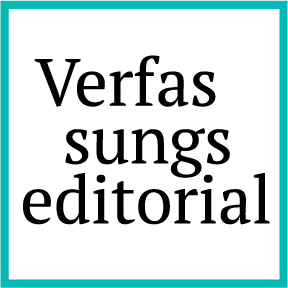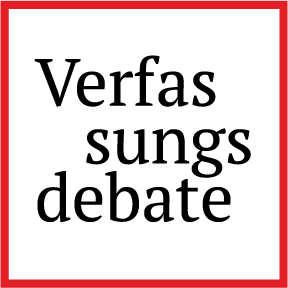Mirroring Society’s Struggles
Storytelling at the European Court of Justice
The Court of Justice of the EU (CJEU) stands as a central institution in the European legal and political landscape. Its judgments not only shape the trajectory of European integration but also reveal deeper EU Law Stories – ideological clashes, conflicting narratives and distributive consequences with the subtle emergence of winners and losers in each case. Yet, these dimensions often remain hidden behind the opaque language of the increasingly lengthy rulings and traditional doctrinal analysis.
In Researching the ECJ, a new wave of scholars, employing multidisciplinary method, has begun to uncover these critical dimensions. Their work probes the Court’s jurisprudence, exposing the need to explore contested social, racial and religious identities, the enduring legacies of imperialism and colonialism, and the evolving histories of capitalism shaped by local contexts. This scholarship reminds us that understanding the CJEU case law today demands constant inquiry and willingness to transcend traditional boundaries – moving not only sideward but also “forwards” through decolonial research and self-reflection. This “circling back” between past and present allows for a better grasp of the Court’s profound and far-reaching influence, not only on the technical foundations of European law but also on the human contributions embedded within diverse professional, historical, and local contexts.
Behind the scenes: actors and professional associations
Every legal decision forming a CJEU ruling arises within a broader socio-political context, shaped by the interplay of visible and invisible actors. Who are the key players? Beyond judges and advocates general, Euro-lawyers, Commission legal service officials, domestic litigants and national judges, all contribute to the legal stories emerging from Luxembourg. Historians and sociologists have led the way in exploring these dynamics, with lawyers increasingly following their lead and highlighting the professional and contextual contingencies in the creation of European law. Legal and intellectual histories of European integration have uncovered deeper resistances to the narratives about the necessary evolution of EU law. Historians have revealed more nuanced transnational and European constitutional practices in the ongoing dialogue between national and European courts, as well as the role of national and European professional legal networks.
For instance, Karen Alter in The European Court’s Political Power has demonstrated how European law associations in the Member States strategically defined European integration. In Penser L’Europe par le Droit, Julie Bailleux detailed the behind-the-scenes work of the Commission Legal Services’ director Michel Gaudet. He played a central role in both creating the different national associations that converged in FIDE (Fédération Internationale de Droit Européen) and shaping the architecture and legitimation of the two most revolutionary cases in the early 1960s: Van Gen en Loos and Costa v. Enel.
In Brokering Europe Antoine Vauchez compellingly highlighted FIDE’s role as a transnational legal network. This network provided a platform for practitioners, lawyers, judges, scholars and European Community civil servants to legitimize and openly discuss the Luxembourg Court’s most controversial rulings. The significant role of the Commission Legal Services, particularly through Gaudet’s behind-the-scenes efforts, was pivotal in organizing the first FIDE. Throughout the 1960s and early 1970s, the Commission actively subsidized this European network. However, as the Commission’s direct influence diminished, FIDE grew closer to the ECJ, with judges such as Nicola Catalano, Pierre Pescatore, Robert Lecourt, and Thijmen Koopmans taking on leading roles in shaping its direction.
Recently, the important work of historians such as Morten Rasmussen, Anne Boerger De Smedt, and Alexandre Bernier has shed new light on the role of European law associations in establishing a constitutional practice. Rebekka Byberg further showed how FIDE functioned as a diverse and miscellaneous network, playing a crucial role in advancing impact litigation and legitimizing the ECJ most controversial rulings of the at the European level, while remaining less coordinated and cohesive at the domestic level. These findings by legal historians reveal that, despite the creation of six European law associations in the late 1950s as spin-offs from existing domestic comparative or international law organizations, FIDE’s influence within Member States, particularly in France and Germany, was relatively modest.
Nevertheless, FIDE has served and continues to serve not only as a network for the legitimation of European law but also as a forum for its contestation. Former and future judges and advocates general actively participate in its activities, underscoring its enduring significance. Notably, the 2025 FIDE Congress will be held in Katowice, Poland. This will be the fifth time that FIDE takes place in a former Central and Eastern European Member State under the auspices of the First Advocate General, Macej Szpunar.
Archival (non)revelations
The institutional archives such as the Historical Archive of the EU (HAEU), now celebrating 40 years of access and preservation, together with private archives, are key to sociologists, political scientists and historians to shed new light on the complex and multifaceted development of European law. For instance, the archival work of Bill Davies has shown the embeddedness of the resistance to the ECJ in the German legal, diplomatic and social context. The work of Laurent Warlouzet has shed new light on the shifting economic paradigms influencing the legal consciousness of competition lawyers that reflected conflicting but coexisting economic policies at the core of European integration. Finally, sociologists, political scientists and historians alike, have shed new light through their archival work on the impact litigation strategies by institutional actors in the legal services, social actors including Unions and transnational movements and more generally by ghostwriters as legal professionals in European law.
In Waiting for the Barbarians: Inside the Archive of the ECJ, I explored the challenges of archival work at the HAEU, particularly the limited and sanitized access granted to researchers seeking the Court’s official translations, comparative notes and deliberations on cases that were decided more than fifty years ago. Additionally, I have realized how focusing on specific actors in archival work can sometimes lead to either over- or under-claiming their influence, rather than situating them within their broader historical context or professional networks. A critical insight I received from Vera Friz – whose groundbreaking work on judicial biographies has revolutionized the field – was: “Never have dinner with the subject of your biography or their family, or you will lose part of your objectivity.”
Vera’s book has paved the way in advancing judicial biographical research, particularly on figures like Robert Lecourt, Michel Gaudet, Maurice Lagrange, Nicola Catalano and Pierre Pescatore. This includes the collection focusing on the UK Advocates General at the CJEU and the biographies of Italian judges and Advocates Generals at the Court. This scholarship has emerged alongside a new generation of researchers who have critically reexamined traditional and instrumental methods in EU legal studies. They have revisited the complex legacies of key figures and their “constitutional audacity” in shaping both EU and domestic legal doctrines, offering a nuanced understanding of their roles in legal history.
Finally, the groundbreaking work on Eurafrica: The Untold Story of European Integration and Colonialism has catalyzed important new histories that examine the continuities between Europe’s colonial past and its present. This has opened up significant research avenues, including Megan Brown’s work on Algeria and Emily Marker studies on West Africa, both of which illuminate the enduring legacies of colonialism on the African continent after World War II. Similarly, Hanna Eklund’s research on the Rome Treaty and Lionel Zevounou’s work on Race et Droit in French law demonstrate how these colonial continuities persist in European Union law and domestic legal systems. Undoubtedly, this new wave of interdisciplinary research has “widened and deepened” the field of European law. By revisiting archival sources, collecting fresh data, and examining professional networks and ethnographies surrounding the European Court of Justice, scholars have offered critical insights into how legal knowledge is produced and institutionalized.
A multidisciplinary network of EU law
EU law does not exist in isolation; it is the result of co-production among scholars, lawyers, and judges, shaped by the demands of local plaintiffs and social movements. Rachel A. Cichowski in The European Court and Civil Society, and more recently Mala Loth, in Last Stop Luxembourg, document how legal mobilization has shaped the CJEU jurisprudence. Similarly, EU Law Stories highlights the litigants, lawyers, and scholars contributed to the evolution of EU law, challenging mainstream integration narratives.
These stories often reflect the struggle between competing interests – sovereigntists versus federalists, liberals versus social conservatives, and neoliberals versus socialists. For instance, in landmark cases like Defrenne II, which was pivotal for advancing the doctrine of direct effect and gender equality, feminist voices advocating for workers’ rights were marginalized in the official narrative. The case’s distributive consequences ultimately failed to benefit the plaintiff, underscoring the need for contextual and nuanced accounts that explore both the historical and distributive dimensions of such cases.
This multidisciplinary, network-based approach reveals the ECJ as a dynamic site of contestation where legal, political, and ideological struggles intersect. Understanding these dynamics requires viewing the ECJ not merely as a judicial institution but as an ecosystem of ideas, actors, and power relations.
Narratives and counter-narratives in the legal field
Critical theory offers a rich framework for dissecting the ECJ’s jurisprudence. Hermeneutics highlights the interpretative dialogue at the heart of legal practice, while genealogical approaches uncover the diffuse power relations shaping legal norms. For example, the rise and fall of constitutionalism as a dominant narrative in the 1990s reflects broader shifts in the political economy of European integration. These shifts, however, obscure Another View of the Cathedral – the underlying struggles between social and neoliberal ideologies, particularly as they emerge within private law regimes including contracts, torts as well as trade and investment laws.
As Bruno Latour reminds us in The Pasteurization of France, legal narratives are socially situated productions. They are not mere abstractions but tools that actors use to navigate and contest power structures. As shown in detail by Antoine Bailleux, Europe’s judicial narratives, whether they champion free markets or social justice, shape not only the discourse but also distributive consequences of the Court’s rulings.
Distributive consequences: who wins, who loses and is that enough?
European law and the case law of the ECJ have profound distributive consequences, a dimension long marginalized and still creating blind spots in EU legal scholarship. As highlighted in Is Distributive Analysis Enough?, a contribution to a critical symposium on EU Law and the Place of Critical Approaches in Transnational Legal Theory, addressing distributive consequences constitutes a form of “external critique”. This critique builds on an internal engagement with legal technicalities but also connects the effects of the law to material or real-world outcomes.
The CJEU’s case law often generates significant distributive effects, sometimes amplifying inequalities but occasionally achieving some progressive wins – for instance, in gender equality as Jessica Guth and Sanna Elfving have illustrated in their analysis of equal pay case law before the Luxembourg Court. Conversely, Leticia Díez Sánchez’s Integration through Law and Its Discontents reveals how judge-made law in the EU disproportionately affects marginalized groups in areas like education, taxation and cohesion policies. Similarly, Daniela Caruso and Joanna Genève, in their unorthodox analysis of a grand arrêt like Melki, highlight how this case implicated post-colonial subjects, drawing attention to material inequities and historical injustices embedded in international trade regimes still affecting immigrants and formerly colonized regimes, such as Algeria.
A distributive analysis in EU law not only underscores the internal incoherence of the field but also interrogates the broader external or socio-political dynamics. These entail how law influences bargaining positions of different actors, distributes resources and power among groups and empowers some while disadvantaging others. However, without a clear normative or theoretical commitment, distributive analysis risks falling short of addressing the structural inequalities perpetuated by capitalist production and systemic oppressions in the neoliberal era.
Reimagining European legal scholarship: a call to critical practice
In a recent book co-authored with Günter Frankenberg, Comparative Law: An Introduction to a Critical Practice, we argue for a more critical approach to comparative legal scholarship as a form of legal practice. This approach reveals the need to delve into real-life problems while exploring legal complexities. It means moving beyond traditional debates about methods in comparative law and engaging with legal technicalities in their political, economic and cultural contexts. We emphasize that the technical and internal dimensions of legal rules are inherently tied to ideological and distributive consequences through the non-legal layers that influence the legal consciousness of judges, lawyers and scholars. To address this, we propose two critical moves:
Reconceptualizing Legal Rules on a Continuum: This involves placing technical legal rules on a horizontal spectrum, eventually, creating a matrix to characterize the nuances, or different types of enforcement for each rule. This continuum politicizes the rule, openly acknowledging how its substance, through policy arguments, is shaped by professional discourses about its forms.
Mapping Non-Legal Dimensions: This step requires mapping the non-legal dimensions that influence legal rules, showing how these factors move legal rules along the continuum. Justifications for this movement should draw on a different set of policy arguments, addressing various layers of political economy, morality, cultural, social or institutional considerations.
By undertaking these critical moves, we aim to deepen the understanding of how comparative law operates within broader societal contexts, urging practitioners to consider the interplay of legal and non-legal factors in shaping legal systems and their practices.
Such an approach, which involves understanding how law is relatively autonomous from society by accounting both its internal and external dimensions, is highly relevant for EU law. This perspective not only challenges mainstream legal narratives that use doctrinal decisions in a “merely technical” way to obscure deep-seated power imbalances, but also counters purely political critiques of legal doctrines based on ideological or illiberal positions that disregard “legal technicalities”. The ultimate goal is not to accuse but to understand both the limits and the possibilities of EU law. This includes not only exploring how new legal technicalities are created by the Court’s jurisprudence, which have significant distributive consequences for European integration, but also examining the professional networks through which local or transnational mobilization is spurred by its case law.
Conclusion
The CJEU is more than a court; it is a storyteller, a battleground, and a mirror of European society’s struggles. Its rulings are not merely legal texts but artifacts creating new legal forms through a variety of professional actors inside and outside the court. By critically engaging with these rulings, we can circle back to illuminate the power dynamics, judicial narratives, and distributive effects embedded within them – and imagine either a more utopian and egalitarian European legal order or engage with concrete and gradual reforms of its legal architecture.



